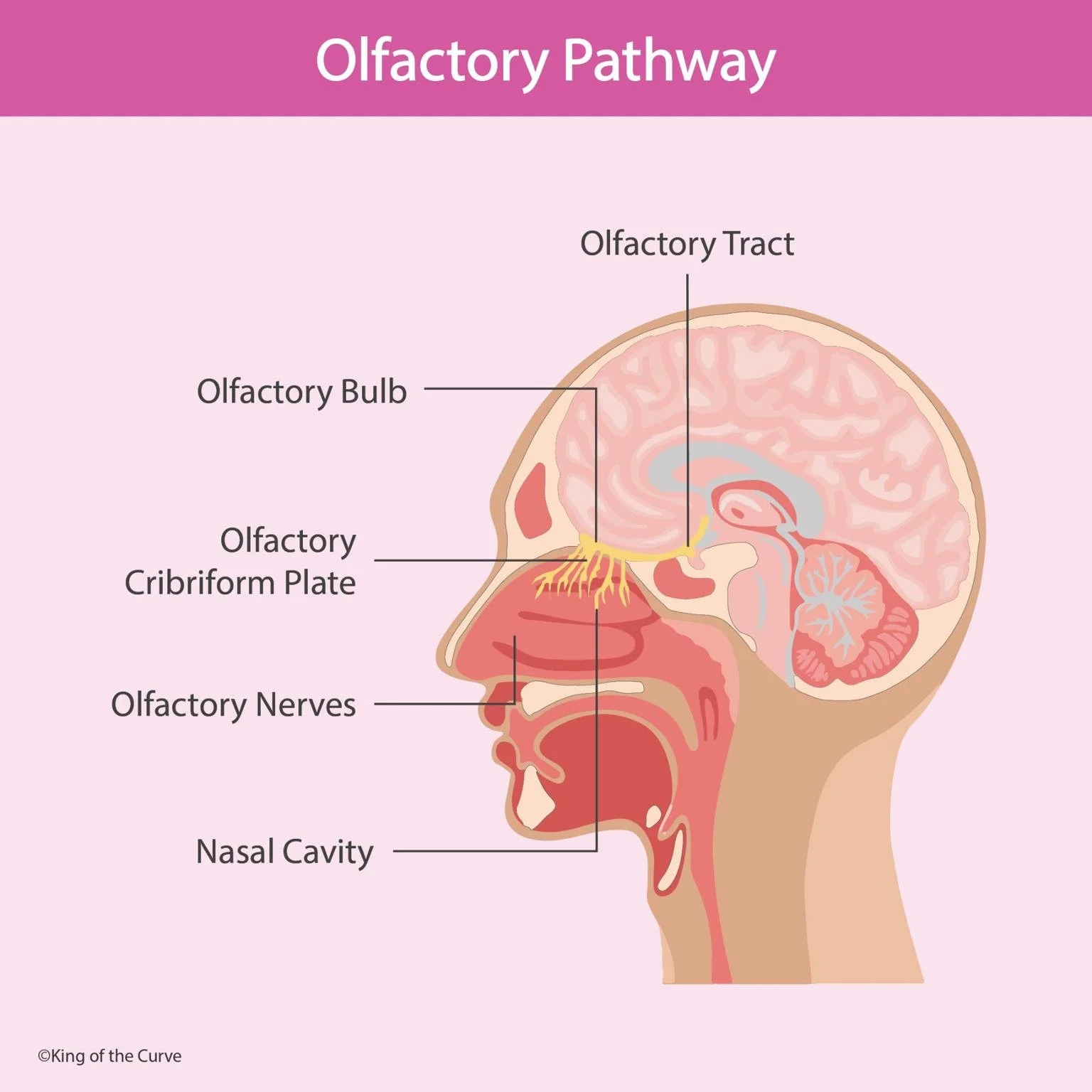👃 Olfactory Pathway
The olfactory pathway is the intricate system responsible for our sense of smell one of the most ancient and emotionally connected human senses. Unlike sight or hearing, the olfactory pathway directly links to the limbic system, which governs memory and emotion. This is why certain scents can instantly transport us back to meaningful moments or trigger deep emotional responses.
🧬 Structure and Function of the Olfactory System
At the heart of smell perception lies the olfactory epithelium, a small patch of sensory tissue in the upper nasal cavity. This region contains millions of receptor neurons that detect odor molecules and send impulses through the olfactory nerves. These nerves then pass through the olfactory cribriform plate, a thin, porous bone that acts as a bridge between the nasal cavity and the brain.
From there, these signals reach the olfactory bulb, a neural structure that processes and refines sensory information. The bulb acts as an initial sorting station, filtering odor signals before sending them to higher processing centers in the brain.
🧠 Signal Processing in the Brain
Once signals reach the olfactory bulb, they travel along the olfactory tract toward regions such as the amygdala, hippocampus, and orbitofrontal cortex. These areas are responsible for assigning meaning, memory, and emotional context to odors. The hippocampus links a scent to a memory, while the amygdala evokes emotional responses such as comfort, fear, or nostalgia.
This direct neural connection between smell and emotion makes the olfactory system one of the most powerful sensory pathways in human experience. It influences appetite, attraction, and even instinctive behaviors.
⚕️ Clinical and Biological Significance
The olfactory system not only helps us perceive smells but also provides insights into overall brain health. Conditions such as anosmia (loss of smell) or hyposmia (reduced smell sensitivity) can result from infections, head trauma, or neurodegenerative diseases like Parkinson’s and Alzheimer’s. Because olfactory neurons can regenerate, researchers are studying them as a potential model for neural repair and stem cell therapy.
Furthermore, early olfactory dysfunction is now recognized as a possible biomarker for neurological disease, making smell tests an important diagnostic tool in clinical settings.
📊 Table: Key Components of the Olfactory Pathway
| Structure | Function |
|---|---|
| Nasal Cavity | Draws in odor molecules and directs them to sensory receptors. |
| Olfactory Nerves | Transmit electrical signals from receptor neurons to the brain. |
| Olfactory Bulb | Processes incoming signals and relays them to higher brain regions. |
| Olfactory Tract | Connects the bulb to the limbic system and olfactory cortex for interpretation. |
🌸 Conclusion
The olfactory pathway demonstrates the intimate relationship between our sensory and emotional worlds. It transforms simple airborne molecules into rich experiences tied to memory, emotion, and survival. Beyond its biological function, the olfactory system continues to inspire research in neuroscience, revealing how deeply interconnected our senses are with who we are and how we experience life.
Frequently Asked Questions (FAQs)
-
Aim for 4-6 focused hours, ensuring you incorporate breaks to avoid burnout.
-
Practice mindfulness techniques, take practice exams under realistic conditions, and maintain a balanced lifestyle.
-
Set short-term goals, seek support from mentors, and reward yourself for small achievements.
-
Regular exercise improves focus, reduces stress, and enhances overall mental clarity.
-
KOTC offers personalized learning tools, gamification features, and adaptive question banks to help students stay on track without burnout.


